
Brian Wilson Aldiss was an English writer, artist and anthology editor, best known for science fiction novels and short stories. His byline reads either Brian W. Aldiss or simply Brian Aldiss, except for occasional pseudonyms during the mid-1960s.
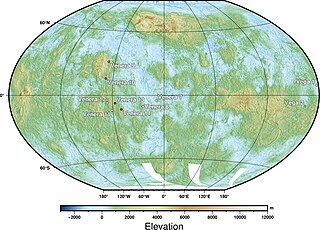
The Venera program was a series of space probes developed by the Soviet Union between 1961 and 1984 to gather information about the planet Venus.
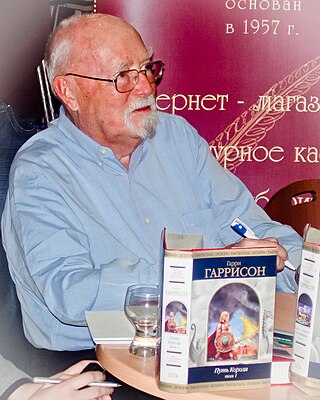
Harry Max Harrison was an American science fiction author, known mostly for his character The Stainless Steel Rat and for his novel Make Room! Make Room! (1966). The latter was the rough basis for the motion picture Soylent Green (1973). Long resident in both Ireland and the United Kingdom, Harrison was involved in the foundation of the Irish Science Fiction Association, and was, with Brian Aldiss, co-president of the Birmingham Science Fiction Group.

Scientific romance is an archaic, mainly British term for the genre of fiction now commonly known as science fiction. The term originated in the 1850s to describe both fiction and elements of scientific writing, but it has since come to refer to the science fiction of the late nineteenth and early twentieth centuries, primarily that of Jules Verne, H. G. Wells and Arthur Conan Doyle. In recent years the term has come to be applied to science fiction written in a deliberately anachronistic style as a homage to or pastiche of the original scientific romances.
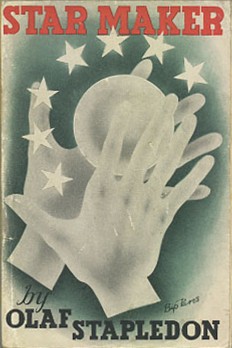
Star Maker is a science fiction novel by British writer Olaf Stapledon, published in 1937. Continuing the theme of the author's previous book, Last and First Men (1930)—which narrated a history of the human species over two billion years—it describes a history of life in the universe, dwarfing the scale of the earlier work. Star Maker tackles philosophical themes such as the essence of life, of birth, decay and death, and the relationship between creation and creator. A pervading theme is that of progressive unity within and between different civilisations.
The Space Trilogy is a series of science fiction novels by C. S. Lewis. The trilogy consists of Out of the Silent Planet (1938), Perelandra (1943), and That Hideous Strength (1945). A philologist named Elwin Ransom is the protagonist of the first two novels and an important character in the third.

Venera 4, also designated 4V-1 No.310, was a probe in the Soviet Venera program for the exploration of Venus. The probe comprised a lander, designed to enter the Venusian atmosphere and parachute to the surface, and a carrier/flyby spacecraft, which carried the lander to Venus and served as a communications relay for it.

The planet Venus has been used as a setting in fiction since before the 19th century. Its opaque cloud cover gave science fiction writers free rein to speculate on conditions at its surface—a "cosmic Rorschach test", in the words of science fiction author Stephen L. Gillett. The planet was often depicted as warmer than Earth but still habitable by humans. Depictions of Venus as a lush, verdant paradise, an oceanic planet, or fetid swampland, often inhabited by dinosaur-like beasts or other monsters, became common in early pulp science fiction, particularly between the 1930s and 1950s. Some other stories portrayed it as a desert, or invented more exotic settings. The absence of a common vision resulted in Venus not developing a coherent fictional mythology, in contrast to the image of Mars in fiction.

Observations of the planet Venus include those in antiquity, telescopic observations, and from visiting spacecraft. Spacecraft have performed various flybys, orbits, and landings on Venus, including balloon probes that floated in the atmosphere of Venus. Study of the planet is aided by its relatively close proximity to the Earth, compared to other planets, but the surface of Venus is obscured by an atmosphere opaque to visible light.

Pirates of Venus is a science fantasy novel by American writer Edgar Rice Burroughs, the first book in the Venus series, the last major series in Burroughs's career. It was first serialized in six parts in Argosy in 1932 and published in book form two years later by Edgar Rice Burroughs, Inc. The events occur on a fictionalized version of the planet Venus, known as "Amtor" to its inhabitants.
Galaxy novels, sometimes titled Galaxy Science Fiction Novels, were a series of mostly reprint American science fiction novels published between 1950 and 1961.
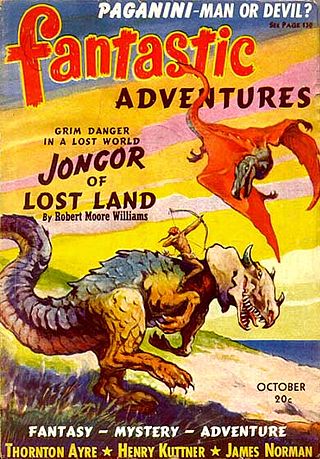
Fantastic Adventures was an American pulp fantasy and science fiction magazine, published from 1939 to 1953 by Ziff-Davis. It was initially edited by Raymond A. Palmer, who was also the editor of Amazing Stories, Ziff-Davis's other science fiction title. The first nine issues were in bedsheet format, but in June 1940 the magazine switched to a standard pulp size. It was almost cancelled at the end of 1940, but the October 1940 issue enjoyed unexpectedly good sales, helped by a strong cover by J. Allen St. John for Robert Moore Williams' Jongor of Lost Land. By May 1941 the magazine was on a regular monthly schedule. Historians of science fiction consider that Palmer was unable to maintain a consistently high standard of fiction, but Fantastic Adventures soon developed a reputation for light-hearted and whimsical stories. Much of the material was written by a small group of writers under both their own names and house names. The cover art, like those of many other pulps of the era, focused on beautiful women in melodramatic action scenes. One regular cover artist was H.W. McCauley, whose glamorous "MacGirl" covers were popular with the readers, though the emphasis on depictions of attractive and often partly clothed women did draw some objections.
Four Encounters is an unfinished work by the writer and philosopher Olaf Stapledon, written in the late 1940s but only published by Bran's Head Books in 1976, 26 years after the author's death. This edition contained an introduction by Brian Aldiss, a longtime champion of Stapledon's works. The text is also available in compilations of the author's writings.
The Road to Science Fiction is a series of science fiction anthologies edited by American science fiction author, scholar and editor James Gunn. Composed as a textbook set to teach the evolution of science fiction literature, the series is now available as mass market publications. The six-volume set collects many of the most influential works of the genre. It was published originally by Signet and then by White Wolf Games Studio. Volumes 1 through 4 are currently being reprinted in paperback format by the company Scarecrow Press.

The Sky People is an alternate history science fiction novel by American writer S. M. Stirling. It was first published by Tor Books in hardcover in November 2006, with a book club edition co-published with the Science Fiction Book Club following in December of the same year. Tor issued paperback, ebook, and trade paperback editions in October 2007, April 2010, and May 2010 respectively. Audiobook editions were published by Tantor Media in January 2007.
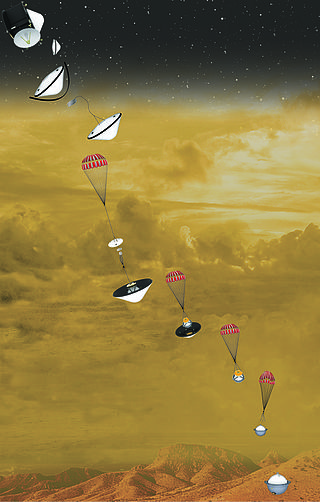
DAVINCI is a planned mission for an orbiter and atmospheric probe to the planet Venus. Together with the separate VERITAS mission, which will also study Venus, it was selected by NASA on June 2, 2021 to be part of their Discovery Program. Its acronym is inspired by Leonardo da Vinci in honor of his scientific innovations, aerial sketches and constructions.












